What crocodile mummies can tell us about everyday life in ancient Egypt
When archaeologists, funded by University of California benefactor Phoebe A. Hearst, found hundreds of crocodile mummies on an expedition to Northern Egypt in 1899, they were annoyed. They were searching for human mummies and artifacts, fueled by Egyptomania — the Western obsession with all things Egyptian.
When they found papyri — paper’s earliest ancestor — stuffed inside of the mummies with text written on it by Egyptians thousands of years before, they were suddenly interested. But instead of collecting the mummies, they began to break them open, remove the papyri and discard the crocodiles.
Now, more than 100 years later, 19 mummified crocodiles are part of the Egyptian collection at the Phoebe A. Hearst Museum of Anthropology at UC Berkeley. These mummies, along with a collection of papyri held by the Center for the Tebtunis Papyri at the Bancroft Library, give us clues about how everyday ancient Egyptians lived and how far they went to appease crocodiles, hoping their devotion would win them some good will toward humankind.
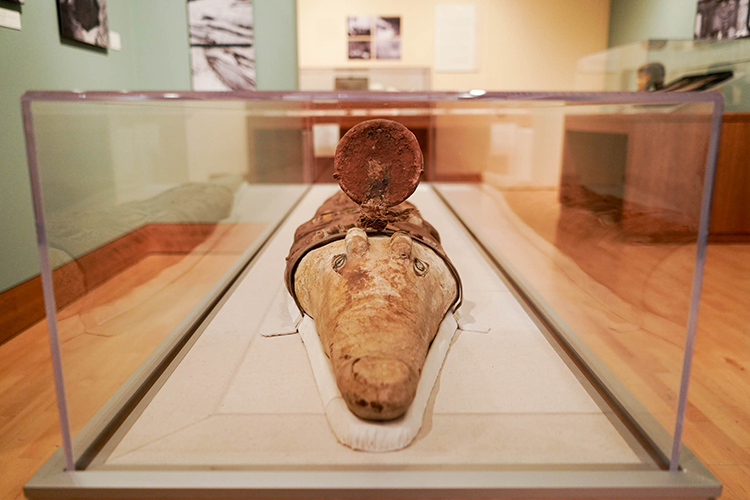
Read an extended written version of Fiat Vox episode #70: “What crocodile mummies can tell us about everyday life in ancient Egypt.”
In 1899, two archaeologists — Arthur Hunt and Bernard Grenfell — were on an expedition in Northern Egypt in an ancient town called Tebtunis. (It’s now Umm el-Baragat.) With funding from famed University of California benefactor Phoebe A. Hearst, they were searching for human mummies and other ancient artifacts.
At the time, there was a Western fascination with ancient Egypt, later coined Egyptomania. Americans and Europeans were after all things Egyptian — especially human mummies, partly because the mummies represented the Western obsession with bringing the dead back to life.
While the archaeologists and their team were excavating the town’s subterranean cemeteries, they did find human mummies, but they also found other mummies — ones they didn’t expect to find: crocodile mummies.
Instead of being excited about the discovery, they saw the reptilian mummies as a nuisance, getting in the way of what they really wanted.
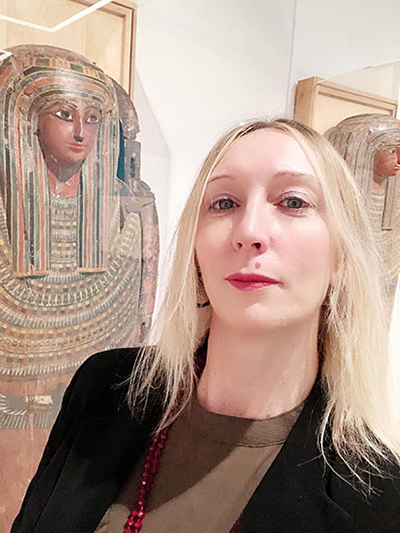
Rita Lucarelli is a professor of Egyptology in the Department of Near Eastern Studies at UC Berkeley.
“There’s even a story that, at a certain point, a workman was super frustrated that he found yet another crocodile mummy,” says Lucarelli. “When he threw it away, the mummy broke open and revealed that it was stuffed with papyri.”
Papyri is paper’s earliest ancestor, made from the papyrus plant. On the papyri that was stuffed inside of the mummies was text written by Egyptians thousands of years before.
Suddenly, the archeologists were interested in the crocodile mummies. But only for the papyri. So, the team began to break open the mummies, remove the papyri and then discard the crocodiles.
Two years later, in 1901, what today is called the Phoebe A. Hearst Museum of Anthropology was founded at the University of California. Lucarelli is the museum’s faculty curator of Egyptology.
She says that up to 17,000 ancient Egyptian artifacts from various sites, including from that expedition in Tebtunis, are kept at the museum. It’s the largest Egyptian collection in North America. Among the artifacts are 19 crocodile mummies and mummy parts.
Although the mummified crocodiles at the Hearst Museum are just a fraction of those discovered in Tebtunis, they can still tell us a lot about the lives of everyday people in ancient Egypt.
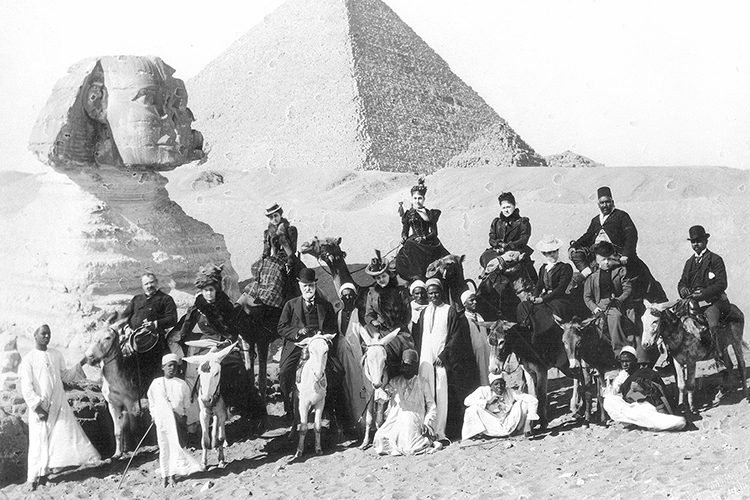
Crocodiles were a constant threat to the ancient Egyptians. They lived in all regions — in swamps and marshes and along the Nile River. And there were a ton of them.
Some Egyptian tomb walls are decorated with scenes that show herdsmen performing magical spells to ward off crocodiles before they crossed the Nile with their cattle on wooden boats or platforms.
“The crocodile was seen as a very powerful animal,” says Lucarelli. “It could live on earth and in water. It could attack very quickly. It was very powerful and also unpredictable. It had much physical strength — male crocodiles are huge. They can reach the length of 6 meters, so they were really huge. Even some of these mummies are really big mummies. They are carnivorous animals. In the wild, their diet consists of mostly fish, but they are really ready to attack anything that passes by.”
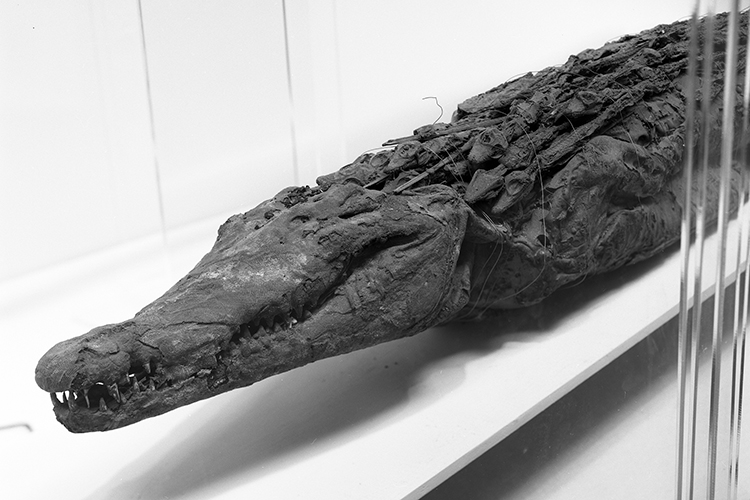
Lucarelli says the mummies were likely used as votive offerings to the crocodile gods, given as a way to gain good favor with the giant, deadly reptiles.
The main crocodile god was called Sobek, but there were many crocodile deities in antiquity. In Tebtunis, there was a temple to Sobek marking the center of town.
“And so, because they were so dangerous and feared, there was, almost, I think, a need to see them as gods and to appease them,” she says. “So, by having a temple to the crocodile god, bringing offerings was a way to respect the aggressive character of these animals and, theoretically, to use this power with benevolence towards humankind. Also, crocodiles were very prolific, so they became also a symbol of fertility.”
Ancient Egyptians living along the Nile counted on the river to flood every August, spreading fertile soil to nourish their crops. The Egyptians feared that if they didn’t make offerings to Sobek, he wouldn’t produce a sufficient flood.
There were crocodile priests who spent their days mummifying crocodiles and offering them to the gods. They meticulously wrapped the crocodiles with the same material and care that was used for human mummies, which shows how important these offerings were.
To hold the mummies’ shape, priests would stuff the mummies with waste papyri that had writing on it that people didn’t have a use for anymore.
This waste papyri, plus other texts that were found in Tebtunis, reveal what daily life was like for the ancient Egyptians. It’s knowledge that’s invaluable to social historians today.
That’s according to Andrew Hogan. He’s a postdoctoral fellow at the Center for the Tebtunis Papyri at the Bancroft Library at Berkeley.
“Often histories are sort of referred to as ‘great man’ political histories,” says Hogan. “It’s very easy in early America to go from Washington to Adams to Jefferson and so on. Those have been really done to death, I think. One of the things that I find so invigorating and fascinating about working with the papyri is that you are really peeling away below the 1%. So, you’re getting to the vast majority of the lived experience for most people in the ancient world.”
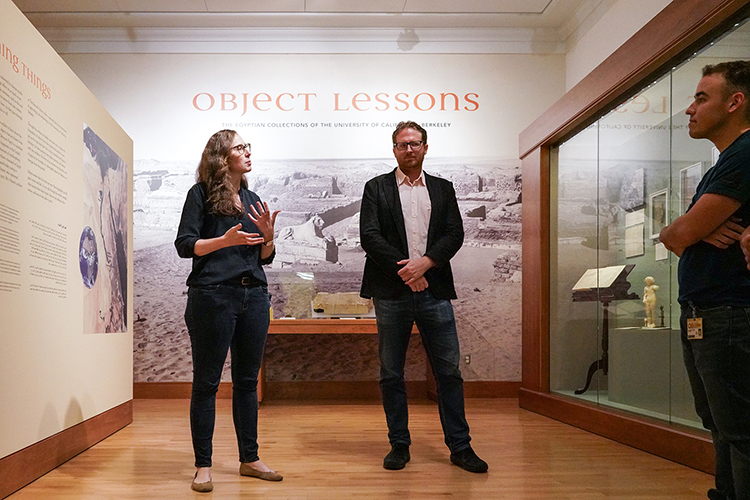
The center holds a collection of more than 26,000 pieces of papyri collected over several years across Egypt. It’s the largest collection of Egyptian papyri in North America and among the largest in the world. (Although Hogan notes that the University of Michigan actually has more complete texts of Egyptian papyri.)
Hogan says there are two main groups of papyrus texts in the collection: literary documents, including texts that have been lost to us, such as fragments of Sophocles’ play Inachus or The Dictys Cretensis, a pseudo-chronicle of the Trojan War.
And then, there’s the documentary evidence, the texts that, when put together, allow us to write a kind of history that you can’t write anywhere else in the ancient world.
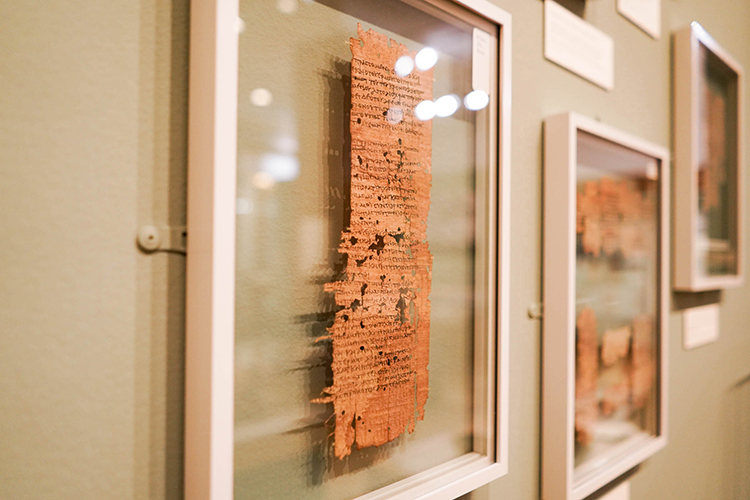
“With the documentary papyri, you have all sorts of different texts, just thousands and thousands of them,” says Hogan. “You get contracts and wills and official petitions. You get sort of day-to-day ways that people would interact with religion, when they would make a prayer and tie it up and wear it as an amulet around their necks. You get deeds and land registers. You get tax documents. And then, on the other end of things, you get royal decrees that have come down and have been stored in local offices. And then, you get the really fun things, like letters.”
In the letters, he says, people express many of the same emotions that we have today — the same fears about change, hopes for the future, even worries about money. He says it speaks to the universality of what it means to be human.
“I think that if you consider everything on a case-by-case basis, we can really point to a sort of shared human experience rather than an unshared one.”
Today, there aren’t nearly as many crocodiles in Egypt, says Lucarelli.
They’re mostly in the southern part of the Nile Valley. And although they’re still dangerous — about 200 Egyptians die every year from crocodile attacks — people have more effective tools to defend themselves against the predators.
A combination of factors led to the crocodiles decreasing in number: the Aswan Dam was built, plus climate change, pollution, over-hunting and habitat degradation. And also, Christianity and Islam spread throughout Egypt. These religions didn’t value animals like the religion of its ancient inhabitants.
“With the advent of Christianity in Egypt, the Copts were also destroying a bit of this polytheistic iconography of gods looking like animals — they were seen as demons,” says Lucarelli. “So, with the advent of Christianity, then Islam, the indigenous polytheistic Egyptian religion died. And this is when, also, of course, Sobek, the crocodile god was not worshipped anymore.”
Lucarelli says that she hopes the museum can find a way to share the Egyptian collection with a wider audience — maybe in an exhibition on the Nile gods or the crocodiles of ancient Egypt.
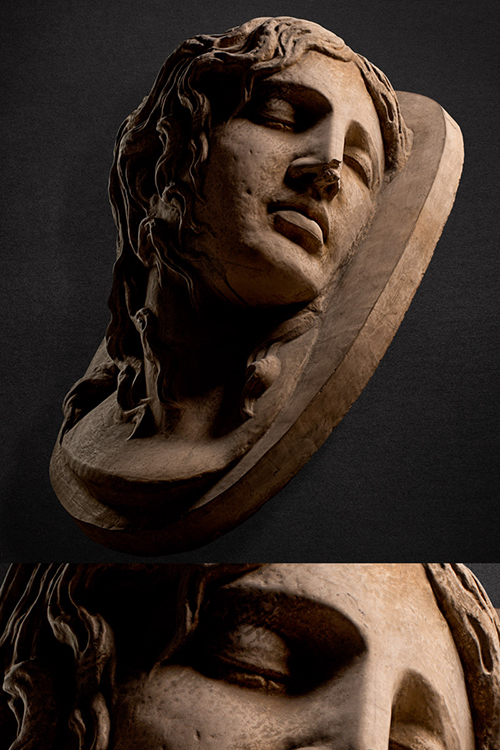
The Hearst Museum today has an online exhibit called Exploring Objects, Fears and the Future. It came from a fall 2018 seminar for first-year students taught by Adam Nilsen, head of education and interpretation at the museum.
Students started off the semester talking about things that concerned them in the world and how a museum exhibit could shed new light on issues like climate change, poverty, inequality and the unknown.
After the students began to look through the museum’s two collection areas that hold, in total, 3.8 million objects, Nilsen says the students noticed that many of the objects had to do with protection and were used to allay different fears — fears that looked a lot like ours today.
“As we paired our lists of objects of interest with students’ lists of broad global concerns,” says Nilsen, “they realized, ‘Wow, a lot of the things that are on this list are things that cause fear. There are a lot of reasons that people are fearful in this day and age. And isn’t it fascinating and enlightening how in different times and places people have had fears that may look different superficially, but that, at their root, may have similarities to our own fears?’”
Noah Hernandez is a third-year English student who stayed on the project as the student curator. He selected items for the exhibit.
It includes a plaster cast of Ludovisi Medusa, a copy of a Roman sculpture that personified evil, and that might have been used to protect against evil forces. There’s also a Chinese magnetic divination compass that helped a practitioner arrange their surroundings according to feng shui and to predict aspects of the future. And yes, a crocodile statue, which Egyptians used to please Sobek, hoping that the deity would bring the yearly flood.
“These objects have distinct and deep histories behind them,” says Hernandez. “It’s almost as if by treating these objects well, they will treat you well, and, in a sense, pass the kindness forward. These objects have history and people’s histories behind them and people who relate to and associate with these objects today. And to not respect these objects would be not respecting human history.”
Although Sobek is no longer worshipped as the god of the Nile, he lives on, giving us insight into what life was like for everyday Egyptians more than 3,000 years ago.
To view the collections at the Phoebe A. Hearst Museum of Anthropology, visit the museum’s digital portal. You can also visit the Hearst from Home to view online exhibits, listen to recorded lectures and more.
Read more about the Tebtunis papyri in this Berkeley Library News story and on the Bancroft Library’s Center for the Tebtunis Papyri. To view the papyri, visit the center’s online exhibits or search the Bancroft Library’s digital collections to view the papyri, as well as other special collections, books, manuscripts, images, photographs and newspapers.
